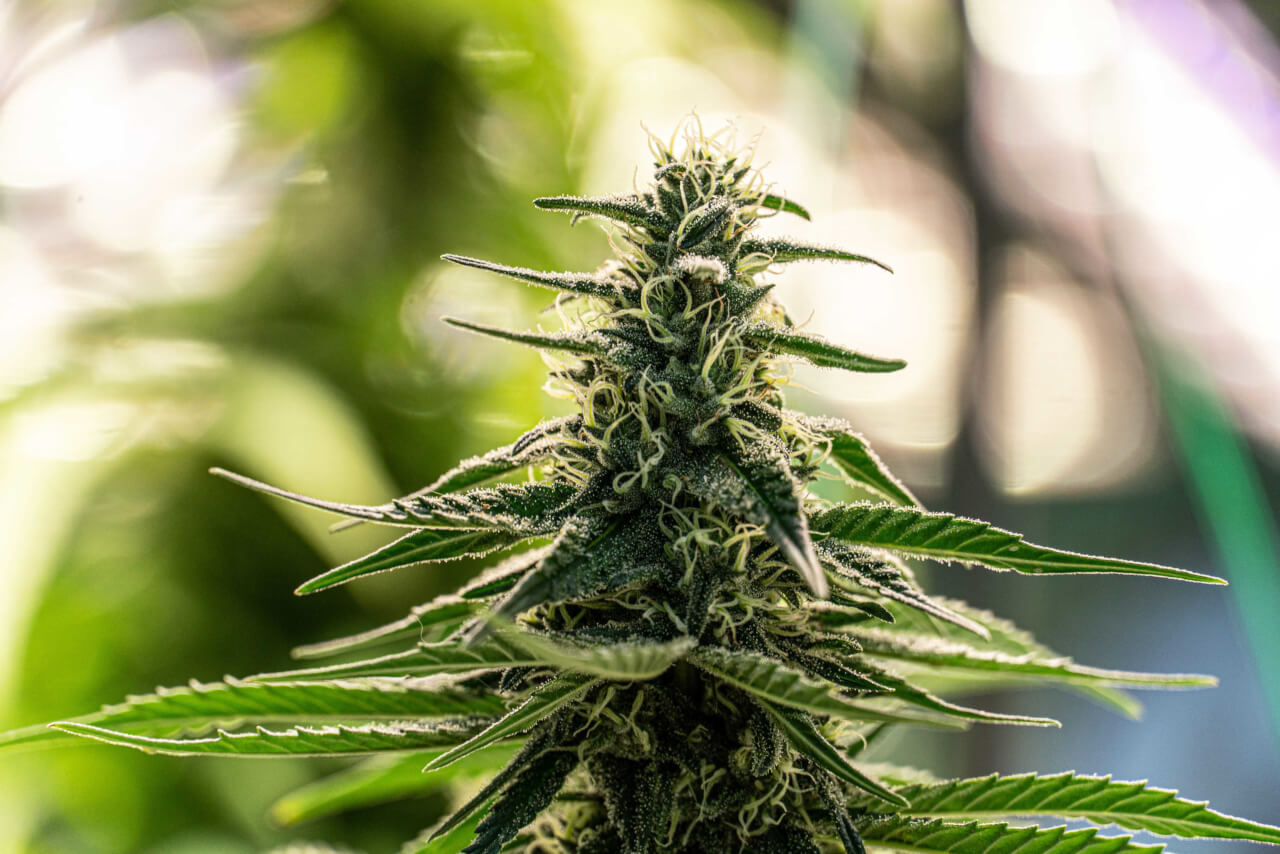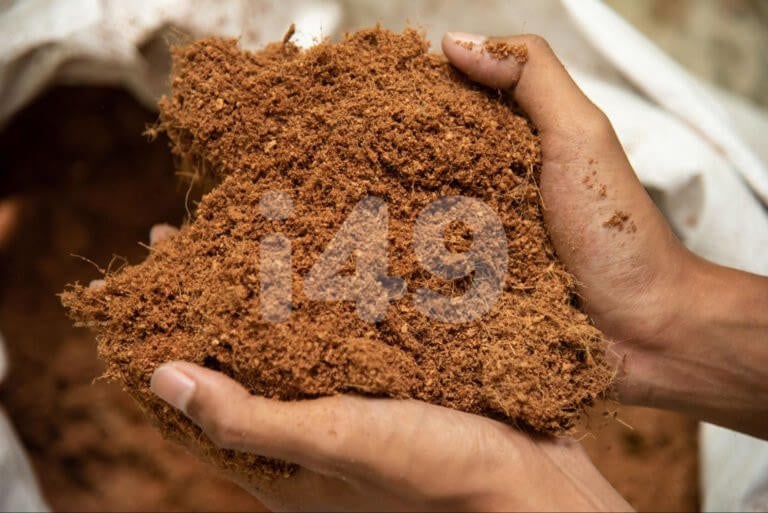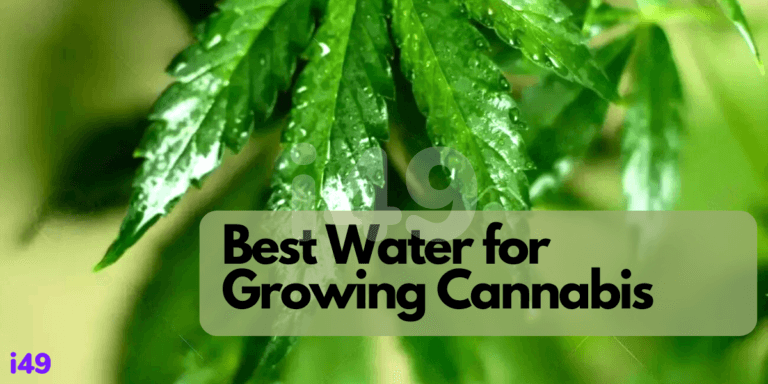Do you break out in a cold sweat at the thought of growing cannabis? It’s a common belief that growing high-value weed is a demanding process. The real challenge is finding the best humidity for growing weed since many factors contribute to reaching the perfect level.
Thanks to our years of experience, we can confidently say that growing marijuana is a simple and rewarding process.
In this guide, we’ll highlight the factors that contribute to humidity control. Join us as we look at the ideal humidity levels for different plant stages and how to control an indoor grow room’s humidity.
Let’s dig in!
Humidity for Growing Weed Indoors
To grow the best quality buds, you must ensure you meet all your little buddies’ needs. There are many things you need when growing weed indoors, such as:
- A designated room or space to grow the buds
- Cannabis grow-lights such as HID (high-intensity discharge) lights
- Maintaining good air circulation in the grow room
- A timer and thermostat for climate control
- Pick a medium (soil vs. hydroponics)
- Maintaining a healthy level of humidity for growing weed
The three main types of humidity are:
- Specific Humidity – the ratio of water vapor vs. dry air in an area
- Absolute Humidity – the total amount of water vapor in an area
- Relative Humidity – the water vapor ratio in the grow room vs. the estimated amount of water a specific area can hold.
The idea that humidity is of high-importance can fly over most people’s heads. It’s no surprise since humidity is not typically a defining factor for indoor plants.
For marijuana plants, humidity can make a world of difference in increasing your yields and potency.
Why Does Humidity for Growing Weed Matter?
Humidity is an essential condition to ensure your weed plants grow perfectly. All growers agree with this factor. You may be wondering, “What’s all the fuss about?”. We’ll preach about its role throughout this article.
To understand why humidity for growing weed is so essential, we must first break down the weed plants’ respiration process. Warning: the following might take you back to Biology class.
- Photosynthesis converts sugars to energy and then to oxygen
- Carbon dioxide enters the marijuana plant through the stomata(microscopic pores on the leaves)
- Due to the carbon dioxide intake, the plant loses some water to the environment
- The levels of humidity will determine how much water the plant loses
The biggest takeaway is: your weed plants need to take in water. If you have ideal humidity for weed plants, they’ll absorb a good amount of moisture from the air via their leaves.
They won’t pull in a lot of water from the roots, resulting in healthy, sticky, and highly potent buds.
What Will Happen If You Don’t Manage Humidity Properly?

Picture this; you’ve spent months setting up a grow tent. Your buds look perfectly fine, so you invite your friends over to show off your healthy, lush buds. Ominous classical music plays as you open up a bud and find the insides are moldy.
What went wrong? The answer: humidity. Numerous things could go wrong if you don’t get the relative humidity for cannabis right. Here are some scenarios:
- Mold or rot
When weed-growers wake up screaming in the middle of the night, it’s probably a mold-related nightmare. Mold or rot occurs when you don’t control the humidity levels appropriately.
To prevent this nightmare, pay close attention to humidity levels at all growth levels.
- Burnt or yellow leaf tips
If humidity is extremely low, the plants will drink mostly from their roots and not so much from their leaves. This change causes over-absorption of nutrients resulting in yellow or nutrient-burned leaves. Remember, too much of a good thing is not good.
- White powdery mildew
Generally, growers think a higher humidity level is better. Extremely high humidity can result in a fungal disease that appears as white powdery mildew. Thankfully, you can avoid this easily by generating proper airflow in your grow room.
- Slow growth
It can be tricky to get the humidity right. If you follow the recommended marijuana humidity for different growth phases, you won’t face this problem. Typically, buds prefer higher humidity when they’re younger and lower humidity as they mature.
If you don’t meet these requirements, your plants won’t grow to their full potential.
Ideal Humidity for Marijuana

You must set up the ideal temperature, and humidity for a grow tent in your grow room. Each growth stage means a different cannabis humidity. We’ve broken down the five main phases and the ideal humidity levels for each.
Seedling Stage
Seedlings thrive in high humidity levels of 65-70%. For optimal results, aim for 68-77 °F with the lights on and 39.5-41 °F lower with the lights off.
Since they don’t have fully developed roots in the cannabis seedling stage, they rely heavily on their leaves for hydration—higher humidity = better hydration for seedlings.
To seriously increase the humidity, you can try using a humidity dome. Many growers use this for clones as it helps build up excess moisture.
Vegetative Stage
During the cannabis vegetative stage, your seedlings will grow an abundance of leaves that grow faster than the roots. Since the leaves absorb most of the moisture, you should keep the hydration levels up.
The roots are still developing but take in more water than in the seedling phase. You should decrease the humidity by 5% each week within the range of 40-70%. The temperature should remain at 71.6-82.4 °F with the lights on and 39.5-41 °F lower with the lights off.
Flowering Stage
When your plants begin to harvest, you should drop the humidity a little at a time till it’s within 40-50%. In this phase, your plant uses its strong roots to drink and does not need as much humidity.
To prevent mold, keep the humidity for weed lower and regulate airflow. Aim to keep the temperature between 68-78.8 °F with the lights on and avoid high temperatures at all costs.
Late Flowering Stage
During this phase, there are two main goals–prevent rot from forming and increase resin production. You should aim to drop the humidity to between 40-45% to prevent mold from forming.
The plant doesn’t need much hydration at this stage, but dropping the humidity can cause plant stress.
Don’t freak out!
Stress can be a good thing somethings-especially stressing your plants at this phase. By dropping the humidity, the plant stresses and produces excess resin.
In turn, this leads to the sticky, potent good stuff. Don’t overdo it, as too much stress can cause damage.
Drying and Curing
When drying and curing, you must keep the humidity within 50-55%.
Keeping it at 50% will prevent mold from forming, so it’s a beginner-friendly route. For higher quality buds, take the slow dry route and dry at 55%.
This is a tricky method as mold could form, so you’ll have to keep an eye on it constantly.
Adjusting Humidity
So far, we’ve covered the humidity and temperature for different levels and gave you a short bio class in the process. Let’s talk about actually putting it into practice.
Most growers know the humidity and temperature chart like the back of their hands. The trouble is actually keeping the relative humidity and temperatures in line.
We have you covered with these tips.
Lowering Humidity
Since the weather has a substantial impact on humidity levels, keep a close eye on the forecast. For example, if a rainy day causes too much humidity, shut off the humidifier or turn it down. A helpful tool is a hygrometer which helps you monitor the moisture in your grow room.
You’ll need to lower humidity levels during the flowering stage to reach the best temp and humidity for growing weed. Investing in a dehumidifier is the best option since it can drain moisture from the air. You can also use an extractor fan on a high setting.
Increasing Humidity
With increasing humidity, you have a lot more options. A simple trick is spraying water on your plants and the walls to keep the humidity up. You could also place bottles or little buckets of water around and hang up some wet towels.
We know it sounds like the beginning of a horror movie, but it’ll do wonders for raising humidity levels.
For a more compact and efficient method, invest in a humidifier. This handy tool takes the water in your grow room, turning it into water vapor. It’ll spray the mist throughout your room, causing an increase in humidity. All you have to do is turn it on–no buckets and towels.
How to Control Humidity in the Grow Room
To get the best quality buds, you must achieve the ideal temperature, and humidity for a grow tent. Maintaining the best humidity for cannabis is a matter of life and death for your buds.
You can be calm about it because we’ve got you covered. It’s not a demanding task if you follow these three simple steps:
1. Get a Humidity Monitor
Proper humidity control is one of the essential elements in getting good-quality buds. Just like people, weed is comfortable in certain temperatures and humidity levels. A humidity monitor is the first step because it helps you ensure the best conditions for your plants.
Once you get a humidity monitor, you’ll need to use a chart to create the perfect climate for your buds.
2. Refer to a Humidity Chart
Different humidity levels are best for different plant phases. If you use a humidity chart, you can easily spot the optimal levels.
In the chart below, we’ve included the best humidity for marijuana in varying stages of growth.
| Plant Phase: | Optimal Humidity Level: |
| Seedlings | 65-70% |
| Vegetative Growth | 40-70% |
| Flowering | 30-50% |
| Late Flowering | 30-40% |
| Drying | 40-60% |
Temperature works hand in hand with humidity. In colder regions, it may be challenging to keep the humidity up. With hot climates, it may be difficult to lower humidity. This temperature chart should give help with that.
| Phases | Temperature (lights on) | Temperature(lights off) |
| Seedling | 68-77 °F | 59-68 °F |
| Vegetative Growth | 71.6-82.4 °F | 64.4-71.6 °F |
| Flowering | 68-78.8 °F | 60.8-71.6 °F |
| Late Flowering | 64.4-75.2 °F | 55.4-66.2 °F |
| Drying | 64.4-69.8 °F | 64.4-69.8 °F |
3. Correct Levels Accordingly
If you follow steps one and two, you’ll create the best humidity for marijuana. Any possible trouble is rare and can be solved quickly. If your humidity monitor shows an unacceptable level for the plant stage, here are some tips:
Too high humidity?
- Use a dehumidifier to absorb moisture from the air.
- Increase ventilation by using a high-powered exhaust fan to increase airflow.
- Don’t over-water your plants, as soggy soil will increase the humidity around them.
- Defoliate extremely leafy plants as they tend to raise the humidity of the grow room.
- Use an air conditioner to cool the room and dehumidify it. Make sure it’s suitable for the size of your room.
Too low humidity?
- Use a humidifier.
- Try the buckets and bottles of water method we mentioned earlier.
- Invest in a swamp cooler to increase relative humidity while keeping temperatures cool.
How to Control Humidity Outdoors
Hakuna Matata. If you’re growing outdoors, it means no worries. Try to grow seedlings during spring and summer when humidity is higher. During flowering, you should be in cooler months with lower humidity levels.
Excess rain can be problematic-consider changing locations to a dryer spot. During colder seasons, aim to keep your plants warmer since cold weather (below 10C°) can cause tissue damage. Use a patio heater or polyethylene plastic covering to keep the best humidity for growing weed.
Monitor Humidity Constantly
Consistency is key. Always keep an eye on your bud’s humidity. Whether you’re starting up or have been a grower for years, monitor your humidity levels and pay attention to your plant stages.
Final Word
Now that you have a better understanding of the required humidity levels for your plant and how to maintain them, you’re for successful growing. Follow the steps that we’ve discussed to ensure your plants grow healthy, sticky, and produce a high-quality yield.
Be sure to sign up for our newsletter and subscribe to our blog for regular tips and tricks for top quality weed. Good luck and happy growing!











